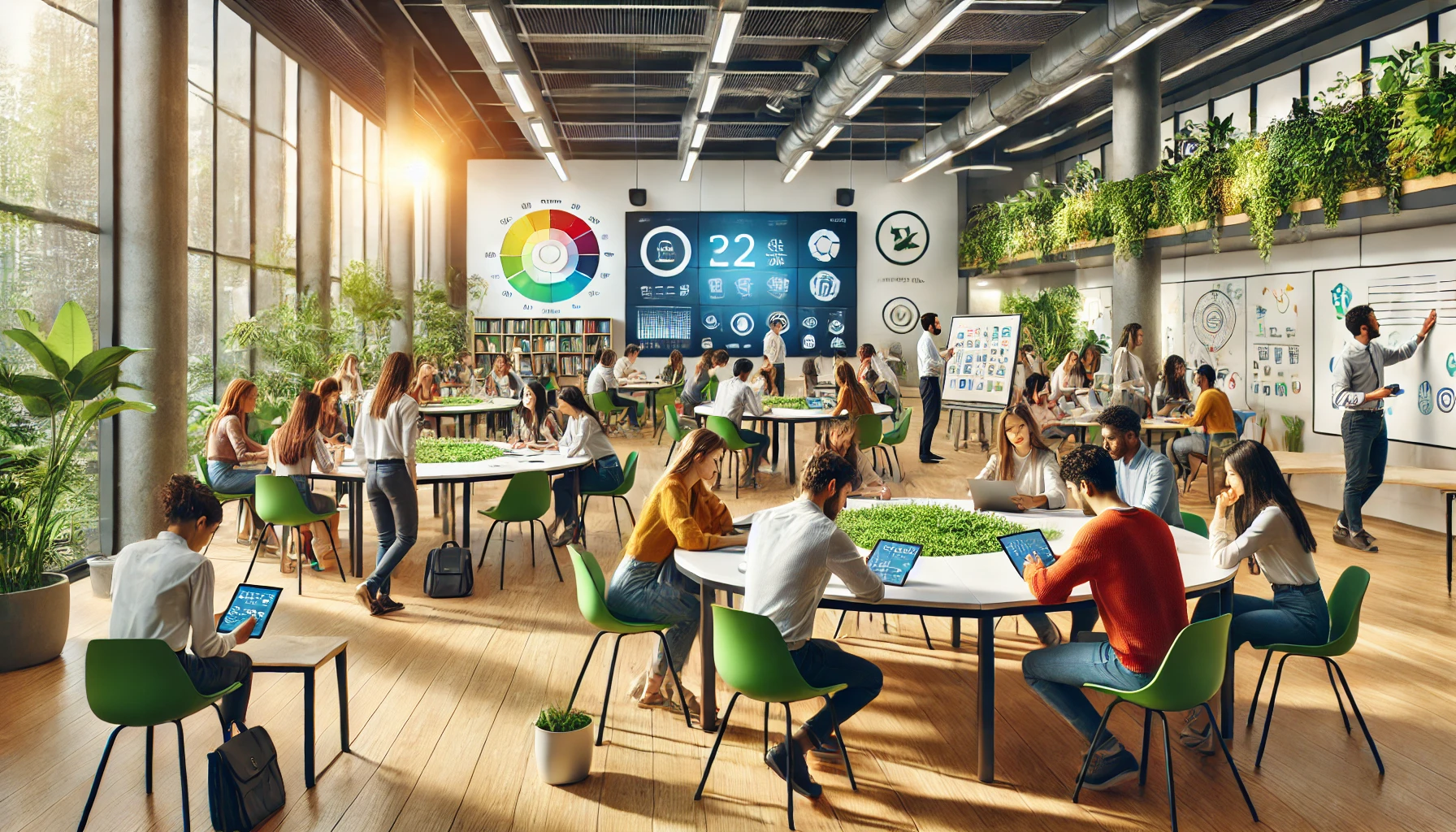Reading Mode
An effective and sustainable learning environment in higher education should balance academic excellence, student well-being, and environmental responsibility. Here are some key indicators:
1. Pedagogical Effectiveness
- Student-Centered Learning: Emphasis on active learning, problem-solving, and critical thinking.
- Innovative Teaching Methods: Integration of technology, flipped classrooms, and blended learning approaches.
- Interdisciplinary and Experiential Learning: Courses that incorporate real-world applications, sustainability challenges, and hands-on experience.
2. Inclusivity and Accessibility
- Diverse Learning Resources: Digital, open-access, and multilingual resources to cater to all students.
- Universal Design for Learning (UDL): Adaptive teaching strategies for students with diverse learning needs.
- Financial and Social Support: Scholarships, mental health services, and community engagement initiatives.
3. Sustainable Campus Infrastructure
- Green Buildings and Facilities: Use of energy-efficient designs, renewable energy, and water conservation systems.
- Waste Management Strategies: Implementation of recycling, composting, and zero-waste policies.
- Sustainable Transportation: Availability of public transit, cycling facilities, and electric vehicle infrastructure.
4. Digital and Technological Integration
- Smart Classrooms and Learning Management Systems (LMS): Use of AI-driven analytics, virtual labs, and cloud-based collaboration tools.
- Remote Learning and Hybrid Models: Infrastructure that supports online education while maintaining in-person engagement.
- Cybersecurity and Data Privacy: Protection of student data and digital rights.
5. Community Engagement and Social Responsibility
- Service-Learning Opportunities: Courses linked to social impact projects and partnerships with local communities.
- Sustainability-Focused Initiatives: Encouraging students to participate in climate action, environmental advocacy, and sustainable entrepreneurship.
- Ethical and Responsible Leadership Development: Programs that foster integrity, ethics, and civic engagement.
6. Institutional Policies and Governance
- Commitment to SDGs: Alignment of institutional strategies with the UN Sustainable Development Goals (SDGs).
- Transparent and Accountable Leadership: Open governance structures involving students, faculty, and stakeholders.
- Long-Term Sustainability Goals: Policies for carbon neutrality, ethical procurement, and sustainable research funding.
7. Student and Faculty Well-being
- Holistic Support Services: Mental health programs, career counseling, and student wellness initiatives.
- Work-Life Balance for Faculty and Staff: Fair work policies, professional development, and faculty mentoring programs.
- Safe and Inclusive Campus Culture: Policies against discrimination, harassment, and violence.
8. Research and Innovation for Sustainability
- Sustainable Research Practices: Ethical research policies, green labs, and interdisciplinary sustainability research.
- Entrepreneurial Ecosystem: Support for student startups, incubation centers, and industry-academia collaborations.
- Global and Local Partnerships: Collaboration with international institutions and local communities to address pressing sustainability challenges.


